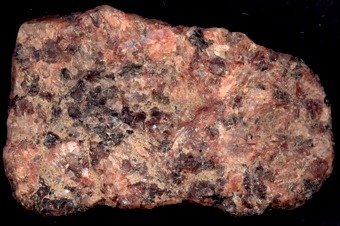The Nature of the Universe
Original Post: 21 May 2012
Posted Here: 4 December 2017
 At one time we believed that everything in the universe, which at that time was just the Earth, consisted of combinations of four elements: air, fire, earth, and water.
At one time we believed that everything in the universe, which at that time was just the Earth, consisted of combinations of four elements: air, fire, earth, and water.
Eventually we came to believe that everything was composed of around ninety elements: hydrogen, helium, lithium, beryllium, boron, carbon, oxygen, nitrogen, etc.Then we discovered that these elements were composed of unique atoms: tiny, indivisible particles of hydrogen, helium, lithium, etc.
Eventually we found that the atoms of each element were not, after all, unique and indivisible particles. “Hydrogen” could actually be any of three different particles (isotopes of hydrogen), because atoms were made up of “elementary” subatomic particles themselves. Each of these subatomic particles—protons, neutrons, and electrons—had unique properties of their own. How these particles combined defined the properties of the atoms that they formed.
Somewhere along the line we discovered that each of these subatomic particles had “antiparticles.” And we discovered a whole zoo of other so-called elementary particles which seemed to exist to account for ways that protons, neutrons, electrons and their antiparticles changed from one into another or disappeared completely or partially.
Then sub-subatomic particles (I’m sure that’s not a proper term, but it illustrates what was discovered) were found—quarks. Quarks of various sorts combined in groups of three, to make up protons, neutrons, and some, but not all, others of the zoo. Electrons (which belong to a family in the zoo known as leptons), for instance, are just electrons—they aren’t composed of quarks or any other elementary particles.
So, can we say that the universe is made up of quarks and leptons as elementary particles? I’m not sure, because when I looked at Wikipedia’s article on Lepton I noted a graphic which showed that in the radioactive process of beta decay, a “down” quark changed into an “up” quark and some other things—one of which was an electron. Will the real elementary particles please stand up?
Some physicists believe the real elementary particles have stood up to be counted. The proposed real elementary particles are “strings”—vibrating 1-dimensional lines. Unfortunately, these strings and the multiple dimensions of the universe which they seem to require are unobserved and, perhaps, unobservable. Of course, at one time, atoms, protons, neutrons, and electrons were all unobserved and unobservable. Strings do form a zoo which seems to explain all of the observed and proposed particles that make up our universe.
If we assume that strings are the ultimate elementary particles, then I think it is fair to ask, “Is there a zoo of different strings, a small number of them, or just one string which can change its frequency to become what would seem to be a different string (just as we can change the frequency of a guitar string from one note to another)? Perhaps one or another of the multitude of “string theories” (Shouldn’t that be “string hypotheses”?) out there answers this question—perhaps different theories provide different answers. I don’t know enough (read, “anything”) about string theory to suggest an answer.
Regardless of how many elementary strings exist in the universe, they must have been created at the Big Bang. The number and type(s) of string(s) is what gives our universe the particles and properties that we do observe and which allow us to exist to make those observations. Perhaps different numbers and type(s) of strings would produce a universe in which we could not exist.
What I am suggesting—and perhaps this moves us from the science (real) to the science (SF) category of post—is that the amount of information in the universe is constant. Nothing can change the number of strings (or whatever the truly elementary particles are) created at the Big Bang. Nothing can change the types of strings created at the Big Bang except for the properties of the strings themselves which define how they interact and change.
We tend to think that creation of new information involves events which never happened before—sprinkling the wrong spice into our pot produces a delicious chili, so we write down a new recipe—new information was created. But this isn’t true. There is no reason that this “new” recipe didn’t exist before—it just didn’t. But it could have, and it could have not because the universe is deterministic but because the number and types of strings created at the Big Bang were as they were. The information was created then, not now. The potential for that recipe—not the certainty—was created with those strings. The fulfillment of that potential is not the creation of new information any more than the fulfillment of a chicken egg’s potential by hatching into a chick instead of becoming an omelet is the creation of something new. The chick, the recipe, or information is “new” only in the sense that we haven’t had the opportunity to see it before. The information that they represent it not new. It’s been here for something like 13.7 billion years. It will be here for a few more.
Keep reading/keep writing – Jack